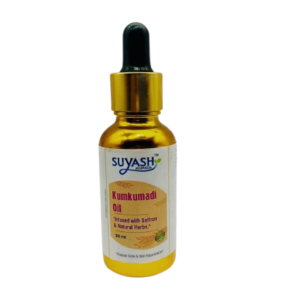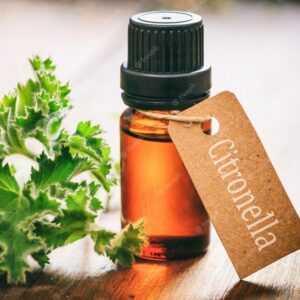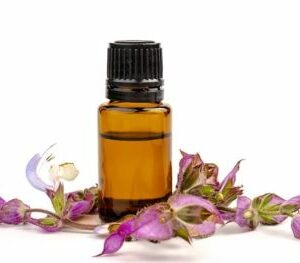Lamp Oil Smokeless
₹100 – ₹120 (Price Per Kg) Excluding GST
Bulk Discount on total Order(Cart) Value.
You Will Get Discount while Check Out.
Value Wise Discount Slab Detail as below
| Discount Structure | ||
|---|---|---|
| Total Order(Cart) Value | Discount % on Total(Cart) Value | Discount Value Upto |
| ₹3000 to ₹9999 | 3% | ₹90 - ₹300 |
| ₹10,000 to 29,999 | 5% | ₹500 - ₹1500 |
| ₹30,000 to ₹69,999 | 7% | ₹2100 - ₹4900 |
| ₹70,000 to ₹1,29,999 | 9% | ₹6300 - ₹11,700 |
| ₹1,30,000 to Above | 13% | ₹16,900 - More |
- Description
- Additional information
- Feature | As Medicine | As Perfumes | In aromatheraphy
- Dosage | Formulation | Blends Well With | Blend
- Purchase Note | Shipping | Packing Size
- Reviews (0)
- Product MSDS/COA
Description
Description
- Product Overview: Lamp oil is a specialized type of fuel used in oil lamps to generate smokeless, odorless, and clean-burning light. It is typically a refined form of kerosene or a similar hydrocarbon-based liquid fuel. The budget description below outlines the various aspects to consider when budgeting for lamp oil, ensuring you have a reliable and efficient lighting solution.
- Quantity: Start by estimating the quantity of lamp oil you’ll need for a specific period. Consider factors such as the number of lamps, their average burn time, and the frequency of usage. This estimation will help determine the required volume of lamp oil for your budget.
- Cost of Lamp Oil: Research the current market prices for lamp oil or smokeless kerosene. Prices may vary based on factors like brand, quality, and region. Obtain quotes from multiple suppliers to compare prices and ensure you get the best value for your budget.
- Consumption Rate: Calculate the approximate consumption rate of lamp oil based on your estimation of lamp usage. This rate will depend on the lamp’s size, wick efficiency, and burn time. By knowing the consumption rate, you can estimate future costs more accurately.
- Storage Containers: Consider the cost of suitable storage containers for the lamp oil. Choose containers made of non-reactive materials such as metal or high-density polyethylene (HDPE) plastic, ensuring they are well-sealed to prevent leakage or evaporation. The number and size of containers will depend on the estimated quantity of lamp oil.
- Delivery and Shipping: If you plan to purchase lamp oil in bulk or from a supplier located far from your location, account for the delivery or shipping charges in your budget. Compare the costs and terms of various suppliers to find the most cost-effective option.
- Safety Measures: Allocate a portion of your budget for safety measures related to lamp oil usage. This may include fire extinguishers, proper ventilation, and any additional safety equipment required to handle lamp oil safely.
- Maintenance and Cleaning: Consider the cost of routine maintenance and cleaning supplies for your lamps. This may involve purchasing replacement wicks, cleaning brushes, and other accessories necessary to keep your lamps in good working condition.
- Contingency: Include a contingency fund in your budget to account for any unforeseen expenses, price fluctuations, or emergencies that may arise during the period covered by your budget. This will help ensure you have the necessary funds to address unexpected situations.
- Cost Tracking and Monitoring: Implement a system to track and monitor your lamp oil expenses regularly. This can be done through manual record-keeping or by using budgeting software. By monitoring your costs, you can identify any deviations from your budget and take appropriate actions to control expenses.
Remember to adjust your budget periodically based on changes in lamp usage, prices, or any other factors that may impact your lamp oil requirements.
Uses
When budgeting for lamp oil (smokeless), consider the following uses:
- Lighting: Lamp oil is primarily used as a fuel source for oil lamps. These lamps provide a soft, warm glow that can create a cozy and intimate atmosphere in homes, restaurants, hotels, or outdoor events. Budgeting for lamp oil allows you to maintain a reliable and consistent lighting solution.
- Emergency Lighting: Lamp oil can serve as an essential backup lighting option during power outages or emergencies. By budgeting for lamp oil, you ensure you have a reliable source of light when other electrical lighting options are unavailable.
- Decorative Lighting: Lamp oil can be used for decorative purposes, such as in oil lanterns or oil candles. These can add a touch of elegance and ambiance to special occasions, weddings, parties, or outdoor gatherings. Budgeting for lamp oil allows you to incorporate these decorative lighting elements into your events.
- Camping or Outdoor Activities: Lamp oil can be used for camping trips or other outdoor activities where traditional lighting sources may be limited. By budgeting for lamp oil, you can ensure you have enough fuel to keep your lamps or lanterns lit during your outdoor adventures.
- Religious and Cultural Practices: In some religious or cultural practices, oil lamps play a significant role. Lamp oil is used to fuel these lamps during rituals, ceremonies, or festivals. By budgeting for lamp oil, you can meet the requirements of your religious or cultural practices.
- Educational or Historical Purposes: Lamp oil can be used in educational settings or historical reenactments to recreate the lighting conditions of the past. By budgeting for lamp oil, you can provide an authentic experience and learn about the historical significance of oil lamps.
It’s important to consider the specific uses and quantities required for each purpose when budgeting for lamp oil. Adjust your budget accordingly based on the estimated consumption, frequency of use, and the duration for which you need a supply of lamp oil.
#SuyashAyurveda #naturalessentialoils #essentialoiltherapy #essentialoilblend #essentialoilsforhealth #aromatherapydiffuser #aromatherapyoils #essentialoilsforeverything#essentialoils #aromatherapy #naturalremedies #wellness #holistichealth #selfcare #healthylifestyle #LampOilBudget #BudgetForLampOil #SmokelessLampOilBudget #LightingFuelBudget #BudgetingForLampOil #OilLampFuelBudget #BudgetingLightingSolutions #BudgetingForSmokelessLampOil #EfficientLightingBudget #AmbientLightingBudget
Benefits
When budgeting for lamp oil (smokeless), there are several benefits that you can enjoy:
- Cost-Effective Lighting Solution: Lamp oil provides a cost-effective lighting option compared to other forms of lighting, such as electricity or batteries. By budgeting for lamp oil, you can achieve significant savings on your lighting expenses, especially in areas with high electricity costs or frequent power outages.
- Reliable Backup Lighting: In situations where power outages occur or electrical lighting options are limited, having a budget for lamp oil ensures you have a reliable backup lighting solution. This can be particularly valuable during emergencies or when consistent lighting is necessary for safety and comfort.
- Versatile Lighting Source: Lamp oil can be used for various purposes, including indoor and outdoor lighting, decorative lighting, camping, and religious or cultural practices. By budgeting for lamp oil, you have the flexibility to meet your lighting needs across different settings and activities.
- Long Burn Time: Lamp oil typically has a longer burn time compared to other fuel sources. This means that a smaller quantity of lamp oil can provide extended hours of lighting. By budgeting for lamp oil, you can optimize your fuel consumption and reduce the frequency of refilling or purchasing new supplies.
- Clean and Smokeless Burning: Smokeless lamp oil produces minimal smoke, soot, or odor when burned. This makes it a cleaner and more pleasant lighting option compared to traditional oil or kerosene. By budgeting for smokeless lamp oil, you can enjoy a healthier and more comfortable environment without the negative effects associated with smoke or strong odors.
- Enhances Ambiance and Aesthetics: Lamp oil provides a soft, warm glow that creates a cozy and intimate ambiance. By budgeting for lamp oil, you can enhance the aesthetics of your space or event, adding a touch of elegance and charm.
- Eco-Friendly Option: Smokeless lamp oil is often formulated to be more environmentally friendly compared to traditional lamp fuels. It produces fewer harmful emissions, reducing its impact on air quality and the environment. By budgeting for smokeless lamp oil, you can contribute to a greener and more sustainable lighting solution.
By considering these benefits and incorporating them into your budgeting process, you can make informed decisions and allocate the necessary funds to ensure a reliable, efficient, and cost-effective supply of lamp oil for your lighting needs.
Additional information
| Available Grades As Below Click to Buy | Economical Grade, Regular Grade, Premium Grade |
|---|
Feature | As Medicine | As Perfumes | In aromatheraphy
Feature
One important budget feature to consider when planning for lamp oil (smokeless) is:
- Cost Analysis and Comparison: Include a feature in your budget that allows for cost analysis and comparison of different lamp oil suppliers or brands. This feature can help you evaluate the prices, quality, and benefits offered by various suppliers, enabling you to make an informed decision and select the most cost-effective option.
Implementing this feature involves:
a. Researching and gathering price quotes from multiple suppliers. b. Analyzing the cost per unit (e.g., gallon, liter) of lamp oil offered by each supplier. c. Comparing the quality, reputation, and customer reviews of different lamp oil brands. d. Considering any additional services or discounts offered by suppliers, such as bulk purchasing or loyalty programs.
By incorporating this cost analysis and comparison feature into your budget, you can make informed decisions about your lamp oil purchases, ensuring that you get the best value for your money and maximize your budget’s purchasing power.
As Medicine
Lamp oil, also known as kerosene or paraffin oil, is not intended for use as a medicine. It is primarily used as a fuel source for oil lamps and other similar devices. Lamp oil should never be ingested or used internally, as it can be harmful and potentially toxic.
It’s important to note that lamp oil is not regulated as a pharmaceutical product, and it does not undergo the same rigorous testing and quality control measures as medications. Therefore, using lamp oil as a medicine can be dangerous and pose serious health risks.
If you have any health concerns or medical conditions that require treatment, it is crucial to consult a qualified healthcare professional. They can provide appropriate medical advice, prescribe necessary medications, and guide you towards safe and effective treatment options.
As Perfumes
Lamp oil is not typically used as a perfume or fragrance product. Lamp oil, also known as kerosene or paraffin oil, is primarily used as a fuel source for oil lamps and similar devices, and it is not designed or formulated for use as a personal fragrance.
Perfumes and fragrances are typically made using a combination of essential oils, aromatic compounds, and alcohol. These ingredients are carefully selected and blended to create pleasant scents for personal use.
Using lamp oil as a perfume is not recommended and can be potentially harmful. Lamp oil is not formulated for use on the skin, and it may contain additives or impurities that can cause skin irritation, allergies, or other adverse reactions.
If you are looking for a personal fragrance, it is best to explore commercially available perfumes or colognes specifically designed for that purpose. These products are regulated, tested, and formulated with safety and skin compatibility in mind.
Always follow the recommended usage and application guidelines provided by the manufacturers of perfumes or fragrances to ensure a safe and pleasant experience. If you have any concerns or specific fragrance-related questions, it’s best to consult with a knowledgeable perfume expert or professional.
In aromatheraphy
Lamp oil, also known as kerosene or paraffin oil, is not commonly used in aromatherapy practices. Aromatherapy typically involves the use of essential oils, which are highly concentrated extracts from plants, for therapeutic purposes. Lamp oil, on the other hand, is a fuel source used in oil lamps and is not specifically formulated for aromatherapy.
It’s important to note that lamp oil is not intended for direct contact with the skin or inhalation, as it may contain impurities or additives that can be harmful. Lamp oil is primarily used for its combustion properties, providing a source of heat and light.
If you are interested in aromatherapy, it is recommended to use essential oils that are specifically produced and labeled for therapeutic purposes. These oils are derived from plants and are carefully extracted to preserve their natural properties. They can be used in diffusers, inhalers, massage oils, baths, and other applications that are safe and suitable for aromatherapy practices.
When using essential oils, it is essential to follow proper dilution guidelines and usage instructions provided by reputable sources or aromatherapy professionals. If you have any specific questions or concerns about using essential oils in aromatherapy, it is best to consult with a certified aromatherapist or a qualified healthcare professional for personalized guidance.
Dosage | Formulation | Blends Well With | Blend
Dosage
Lamp oil, also known as kerosene or paraffin oil, is not intended for internal use or consumption. It is primarily used as a fuel source for oil lamps and should not be ingested, applied to the skin, or used in any other manner that involves direct contact with the body.
Using lamp oil inappropriately can be harmful and pose serious health risks. Lamp oil is not formulated or regulated for medicinal or therapeutic purposes, and its ingestion or application can lead to toxicity, respiratory problems, skin irritation, and other adverse effects.
If you require medication or treatment for a specific condition, it is essential to consult a qualified healthcare professional who can provide appropriate guidance and prescribe the necessary medications or therapies. They will consider your medical history, symptoms, and specific needs to determine the appropriate dosage and form of treatment.
Do not attempt to use lamp oil or any other substance not specifically intended for medical or therapeutic use without the guidance of a healthcare professional. It is crucial to prioritize your safety and well-being by following proper medical protocols and using approved medications or therapies.
Formulation
Lamp oil, also known as kerosene or paraffin oil, typically consists of a refined petroleum-based liquid fuel. The specific formulation can vary slightly between different brands and manufacturers, but the basic composition of lamp oil remains similar. Here are some key aspects of lamp oil formulation:
- Hydrocarbon Base: Lamp oil is primarily composed of hydrocarbons, which are organic compounds consisting of hydrogen and carbon atoms. These hydrocarbons are derived from the distillation and refining of crude oil.
- Low Sulfur Content: To improve the burning characteristics and reduce smoke and odor, lamp oil is often refined to have a low sulfur content. This helps in achieving cleaner and more efficient combustion.
- Additives: Lamp oil may contain certain additives to enhance its performance. These additives can include corrosion inhibitors, stabilizers, and detergents that help improve the fuel’s stability, prevent the buildup of deposits, and protect the wick and burner mechanism of oil lamps.
- Colorants: Some lamp oils may have colorants added to them to provide a specific visual appearance. These colorants are usually non-toxic and are used for decorative purposes or to distinguish the lamp oil from other petroleum-based products.
- Smokeless Formulation: Lamp oil is often marketed as “smokeless” or “low-smoke” to promote cleaner and more efficient burning. The formulation is designed to minimize the production of soot, smoke, and unpleasant odors during combustion.
It’s important to note that the exact formulation of lamp oil can vary between different brands and manufacturers. It is advisable to carefully read and follow the instructions and safety guidelines provided by the specific lamp oil product you are using to ensure safe and optimal performance.
Additionally, it’s crucial to handle lamp oil with care, store it in suitable containers away from heat sources or open flames, and use it only as intended for oil lamps or approved applications.
Blends Well With
Lamp oil, also known as kerosene or paraffin oil, is primarily used as a fuel source for oil lamps and is not commonly used in blending with other substances for fragrance or therapeutic purposes. However, if you are interested in creating custom blends for diffusers or other aromatic applications, you may consider using essential oils or fragrance oils that are safe for such purposes.
When blending essential oils or fragrance oils, it is important to consider their compatibility and the desired scent profile you want to achieve. Here are some essential oils that are commonly used in aromatherapy or fragrance blending:
- Lavender: Known for its calming and soothing properties, lavender oil blends well with citrus oils, floral scents, and woody notes.
- Citrus Oils: Essential oils such as lemon, orange, or grapefruit can add a refreshing and uplifting note to your blends. They blend well with other citrus oils, herbal oils like peppermint or rosemary, and some floral oils.
- Eucalyptus: With its invigorating and cooling properties, eucalyptus oil blends well with mint oils, citrus oils, and other camphoraceous scents.
- Rose: The floral scent of rose oil blends well with other floral oils like jasmine or ylang-ylang. It can also be combined with citrus or woody notes for a unique aroma.
- Sandalwood: Known for its rich and woody aroma, sandalwood oil blends well with other woodsy scents like cedarwood or patchouli. It can also be combined with floral oils for a balanced fragrance.
These are just a few examples, and there are numerous essential oils available with a wide range of scents and therapeutic properties. It’s important to research and experiment with different combinations to find the desired aroma that suits your preferences and needs.
When blending oils, always follow appropriate dilution guidelines and safety precautions. Some essential oils may have specific contraindications or sensitivities, so it’s recommended to consult reliable aromatherapy resources or seek advice from a certified aromatherapist to ensure safe and effective blending practices.
Blend
While lamp oil, such as kerosene or paraffin oil, is not typically used in fragrance blending or aromatherapy, if you are looking to create a custom blend for a specific purpose, it’s important to exercise caution and ensure the safety of the blend.
If you are referring to blending lamp oil with other substances for fragrance purposes, it is not recommended to do so. Lamp oil is primarily designed for combustion and not for direct contact with the skin or inhalation. Mixing lamp oil with other substances can be potentially hazardous and may lead to adverse effects.
For fragrance purposes, it is advisable to explore commercially available essential oils or fragrance oils that are specifically formulated for perfumery or aromatherapy. These oils are intended for safe use on the skin or in diffusers and have been carefully developed to provide pleasant scents and potential therapeutic benefits.
When working with essential oils or fragrance oils, it is important to follow proper dilution guidelines, consult reputable resources or professionals, and prioritize safety.
Purchase Note | Shipping | Packing Size
Purchase Note
- All products are strictly for external use. unless until specifically reconfirmed
- Please refer precautions of using essential oil always before using it directly or indirectly
- All benefits shown are suggested not to be claimed
- Color of the product and packing may vary from lot to lot and time to time. so kindly consider the same before buying
- The product are mostly delivery all over world, but in case if the location is ODA we would be helpless in delivering, so in these case we will refund the paid amount
- Goods are subject to availability at the time of payment received,
- If any order is in shortfall conditions, balance of your amount will be refunded or credited to your account,
- Replacement Policy or refund Policy is strictly within 7 days of receipt of goods
- Lead Time: Most of the cases the order is dispatched on the next working day, but in some cases the order can get a delay until 7 days .. so request to note the aboveShipping
- ShippingCourier -Shree Anjani Courier, DTDC, Professional Courier, Blue Dart, Fedex, DHL
- Air -Through all reputed airlines
- Sea-In LCL and shipments surf
- Surface – TCI Express, V trans, VRL Logistics, Gati, V-Tans, Fedex, CPS and all major transportersPacking Size 25 Ltr , 50 Ltr , 210 Ltr









Reviews
There are no reviews yet.